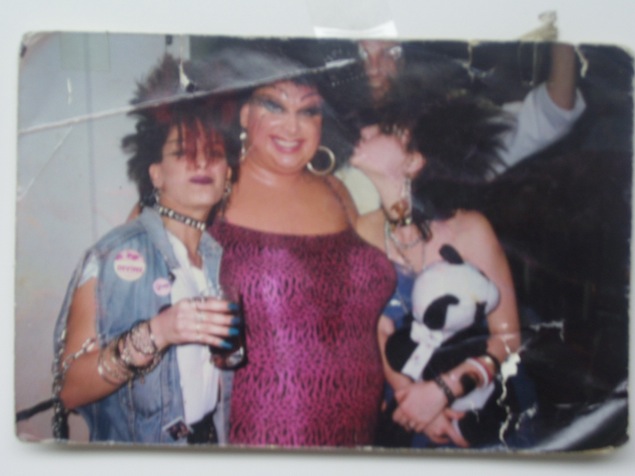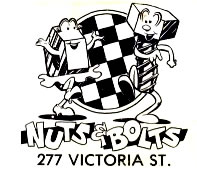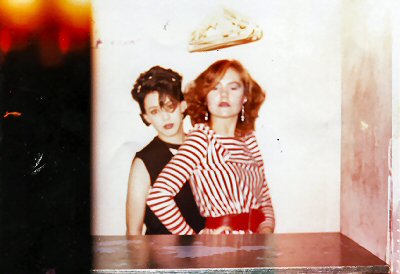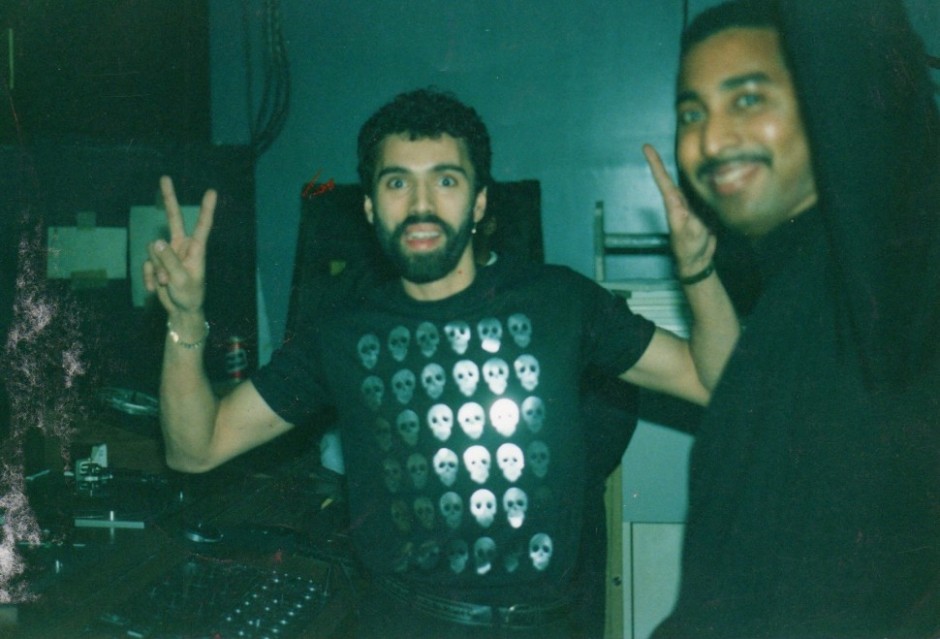Divine (centre) with Nuts & Bolts regulars Lynette and Sherri, 1987. Photo courtesy of David Heymes.
Article originally published December 14, 2011 by The Grid online. Admittedly, it was difficult to research this club’s earliest years and contributors. As a result, a number of details originally included were inaccurate or incomplete, as pointed out in comments from a number of Grid readers. Some details have been updated as a result. This story will be further researched and developed for the Then & Now book.
In the latest instalment of her nightlife-history series, Denise Benson takes us back to a time when the edge of the Ryerson campus served as a breeding ground for Toronto’s alternative-scene explosion.
BY: DENISE BENSON
Club: Nuts & Bolts, 277 Victoria St.
Years of operation: 1980-1988 [Original article stated 1977 - 1988]
History: In many ways, fabled alternative bar Nuts & Bolts was one of Toronto’s most unlikely dance-club success stories. Housed in the basement of a six-storey office building on the edge of Ryerson University’s campus, Nuts & Bolts was owned by Frank Cutajar, also proprietor of the All-Star Eatery, located on the ground floor of the same building.
According to all I spoke with and based on my own experiences—my first professional DJ gigs in Toronto were at Cutajar’s gay/alt club Showbiz, located around the corner, upstairs at 3 Gould St.—Frank was far from cutting-edge or visionary in his approach to running clubs. But he hired wisely.
It seems Nuts & Bolts’ first manager, Ed Jandrisits, was heavily responsible for the bar’s post-punk lean as he, in turn, hired a new-wave-loving staff. Jandrisits set the tone for the venue’s family vibe, with a great number of its bartenders, DJs and other staff—including infamous doorman Henry, who greeted people as they made their way down a dark staircase and through double metal doors—remaining at the club for years, often in a variety of jobs.





